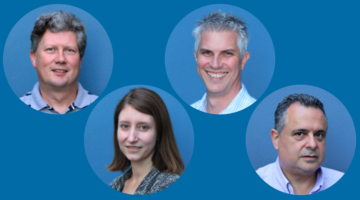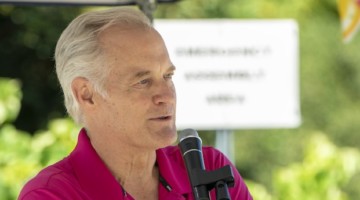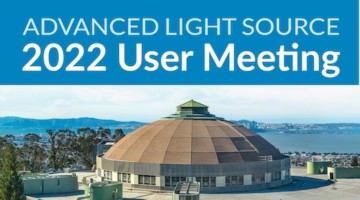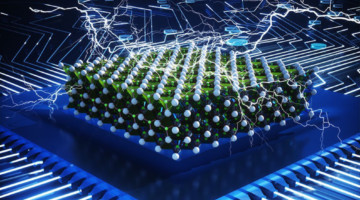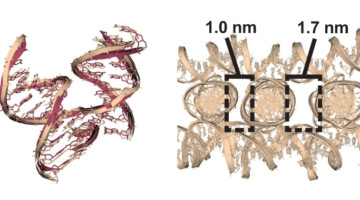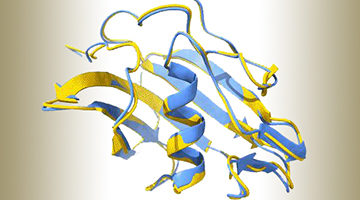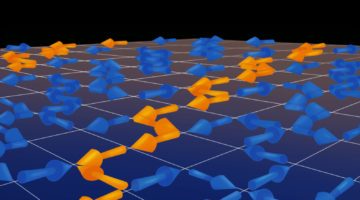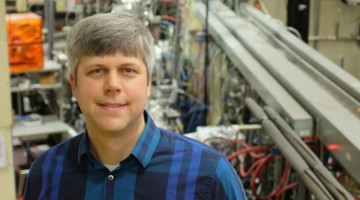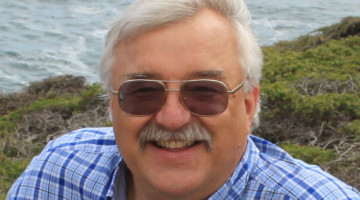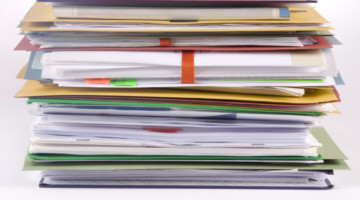Effective September 1, ALS Science Deputy Andreas Scholl will be the interim ALS director, and Head of Strategic Development and Communications for Energy Sciences and ALS Communications Director Ashley White will serve as interim deputy for strategy, alongside Operations Deputies Steve Rossi and Fernando Sannibale. Read more »
ALSNews Vol. 441
August 31, 2022
Steve Kevan Says, “See You Soon!”
After announcing his impending retirement earlier this year, ALS Director Steve Kevan has worked to ensure a smooth transition to the interim ALS management team. He shares his vision of the collaborative future of the ALS and his goal to return as a user before saying not a farewell, but a “see you soon!” Read more »
2022 User Meeting Highlights
The ALS User Meeting was held August 15–17, 2022, co-chaired by UEC members Hope Michelsen, Yu He, and Rourav Basak. With Steve Kevan’s retirement and the approaching ALS-U implementation phase, the overarching theme of this year’s User Meeting was a celebration of the glorious past and anticipation of a very bright future. Read more »
Multilayer Stack Opens Door to Low-Power Electronics
Researchers found that a multilayer stack of ultrathin materials exhibits a phenomenon called negative capacitance, which reduces the voltage required for transistor operation. The material is fully compatible with today’s silicon-based technology and is capable of reducing power consumption without sacrificing transistor size or performance. Read more »![]()
![]()
An Expanded Set of DNA Building Blocks for 3D Lattices
Researchers studied 36 DNA-based molecular junctions and discovered factors that yield superior self-assembled 3D lattice structures. The work expands the set of building blocks for lattices that can scaffold molecules into regular arrays, from proteins for structure studies to nanoparticles for nano-antennas and single-particle sensors. Read more »![]()
![]()
Deep-Learning AI Program Accurately Predicts Key Rotavirus Protein Fold
Rotaviruses are the major causative agents of gastroenteritis worldwide. Attempts to design vaccines are complicated by the rotaviruses’ enormous genetic and immunological diversity. At the ALS, researchers validated the novel structure of a key rotavirus protein, predicted using AlphaFold2, a deep-learning artificial-intelligence program. Read more »
Disorder Drives Long-Range Order in “Tetris Ice” Nanomagnet Arrays
Long-range ordering is typically associated with a decrease in disorder, or entropy. Yet, it can also be driven by increasing entropy in certain special cases. In a recent DOE-funded study, researchers demonstrated that certain artificial spin-ice arrays—nanomagnets lithographically patterned to form Tetris-like shapes—can produce such entropy-driven order. Read more »
Kevan Anderson and the BCG Receive 2022 Renner User Services Award
At this year’s ALS User Meeting, Kevan Anderson, on behalf of the Beamline Controls Group (BCG), was honored with the 2022 Tim Renner User Services Award. The ALS Users’ Executive Committee made the selection for “broad expertise in control systems and software development, and professional judgment and decision-making, which have greatly contributed to the research and development program of the Advanced Light Source.” Read more »
Valeriy Yashchuk Receives 2022 Klaus Halbach Award
Valeriy Yashchuk aims to make the binary pseudo-random calibration tool (BPR) the internationally recognized standard for thorough characterization of a broad spectrum of topography measuring tools. Others might find it daunting to convince scientists around the world to agree on one standard, but Yashchuk is accustomed to roadblocks, and finding creative solutions to them. The ALS Users’ Executive Committee recognized Yashchuk, program lead for metrology, for developing this critical technology. Read more »
September 7 Deadline for General User Proposals
The User Office is accepting new General User Proposals (GUPs) from scientists who wish to conduct research at the ALS in the 2023-1 (January–July) cycle. The deadline for submissions is September 7, 2022. Applicants are reminded that they may request joint access to the Molecular Foundry, a nanoscience user facility at Berkeley Lab, to support their ALS activities. Read more »
